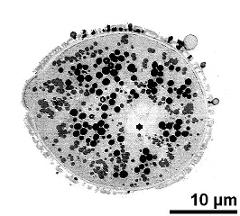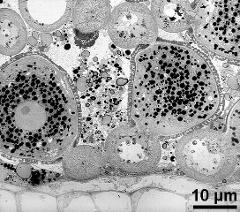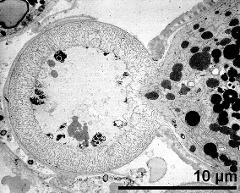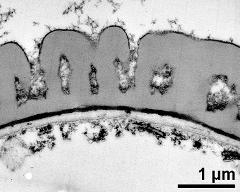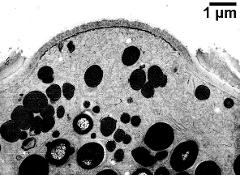Ophiorrhiza longiflora
Taxonomy: Angiospermae, Gentianales, Rubiaceae, Ophiorrhiza
Published: 2017-01-17
Pollen Description
Shape, Size and Aperture
pollen unit: monad, dispersal unit and peculiarities: monad, size (pollen unit): large (51-100 µm), size of hydrated pollen (LM): -, shortest polar axis in equatorial view (LM): -, longest polar axis in equatorial view (LM): -, shortest diameter in equatorial or polar view (LM): -, longest diameter in equatorial or polar view (LM): -, pollen class: colporate, polarity: isopolar, P/E-ratio: -, shape: spheroidal, outline in polar view: triangular, dominant orientation (LM): -, P/E-ratio (dry pollen): -, shape (dry pollen): -, outline in polar view (dry pollen): -, infoldings (dry pollen): -, aperture number: 3, aperture type: colporus, aperture condition: colporate, tricolporate, aperture peculiarities: -
Ornamentation and Structure
LM ornamentation LM: -, nexine: -, sexine: -, SEM ornamentation SEM: -, suprasculpture SEM: -, TEM tectum: eutectate, infratectum: columellate, foot layer: continuous, endexine: compact-continuous, intine: monolayered, wall peculiarities: -, supratectal element: -
Miscellaneous
pollen coatings: pollenkitt, reserves in cytoplasm: starch, lipids, cell number: 3-celled, Ubisch bodies: absent
Annotations: apertural protrusions; rarely 4 colpori
Author(s) of diagnosis: Weber, Martina
Pictures
Picture legend
- mature pollen grain; vegetative nucleus (asterisk) and generative cell - fresh, glutaraldehyde & osmium & potassium ferrocyanide, Thiéry-test, photographer: Weber, M.
- apertural protrusions - fresh, glutaraldehyde & osmium & potassium ferrocyanide, Thiéry-test, photographer: Weber, M.
- detail of apertural protrusion - fresh, glutaraldehyde & osmium & potassium ferrocyanide, Thiéry-test, photographer: Weber, M.
- pollen wall - fresh, glutaraldehyde & osmium, uranyl acetate & lead citrate, photographer: Weber, M.
- aperture after removal of the apertural protrusion - fresh, glutaraldehyde & osmium & potassium ferrocyanide, Thiéry-test, photographer: Weber, M.
Literature
- (1983) Pollen bud formation and its role in Ophiorrhiza spp. Ann Bot 51: 449-452
- (1993) Pollen bud formation in Ophiorrhiza (Rubiaceae). An ultrastructural reinvestigation. Opera Bot Belg 6: 51-59
- (1994) Pollen buds in Ophiorrhiza (Rubiaceae) and their role in pollenkitt release. Bot Acta 107: 257-262
Copyright and Citation
Cite this publication as:
Weber M. 2017. Ophiorrhiza longiflora. In: PalDat - A palynological database. https://www.paldat.org/pub/Ophiorrhiza_longiflora/302948;jsessionid=B579465D0D73515EAEB5EF1EE393DB8D; accessed 2024-04-27

